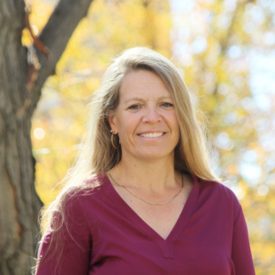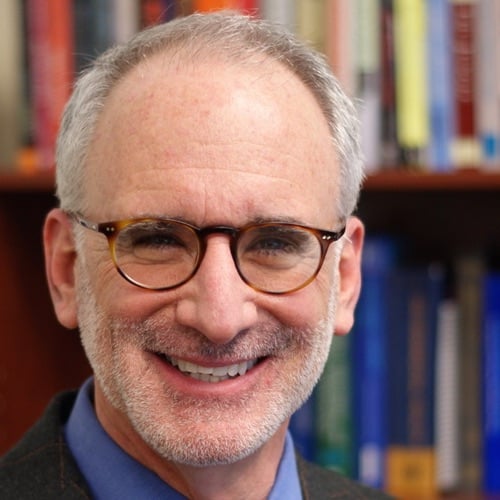What are the types of air pollution in Colorado?
James: In Colorado, one of the major concerns is particulate matter (PM) and there are multiple sizes of particulate matter: PM10, PM 2.5 and PM1.
The shape and the exterior of these particulates plays a major role. For example: How many other chemicals are adsorbed to the particulates such as metals, pesticides, plastics or polycyclic aromatic hydrocarbons (PAHs)? The chemical composition and physical shape and size are factors in the danger of particulate matter. In addition, to the aforementioned chemicals other elements like earthly crustal matter including silica, calcium and magnesium can be adsorbed. This can be dust or other soils that come from the earth’s crust and are dispersed from agriculture tilling, construction or other activities. Emerging research from the Center for Health Work and Environment and School of Pharmacy are exploring the role of silica exposure and systemic health.
Airborne particulate matter materials can irritate the sinus cavity and the lungs. If the material's small enough, it can infiltrate deep into the lungs and be absorbed into the bloodstream. Which is the focus of research our department, especially Lee's group, is looking at: what are the chemical compositions, what are the shapes, what are the sizes of particulate matter and how do they impact our health?
And that's just particulate matter. There's also nitrogen and sulfur oxides, ozone, and then with wildfires, you have unique contaminants like methoxyphenols, and certain PAHs that are increased with wildfire occurrence such as fluorene.
Newman: Nitrogen oxides and sulfur oxides are also important because along with volatile organic compounds (VOCs) they team up with heat, contributing to surface-level ozone. We also have the hazardous air pollutants list called air toxics. That's where you get into some of the metals: formaldehyde, benzene, arsenic, lead, mercury.
For Colorado, radon is also on the list, because we're in a part of the world where there's a fair amount of radon gas that emanates from under our houses.
What are the causes of air pollution in Colorado?
Newman: Industry, construction, vehicle engines, power plants, residential heating, solvent use, paints, consumer products – it’s an extensive list.
James: Even things such as carpet installation can be drivers of VOCs.
Newman: To put it in another way, we're all contributing. It is just that some of the sources are stationary sources that are just routinely putting out proportionally more as big industrial processes and some of them are mobile sources like our vehicles. Just by the sheer volume of traffic and use of combustion engines – including things like thousands of leaf blowers and lawn mowers – there are a lot of these combustion sources from everybody contributing to add up to a lot.
What role does geography play in impacting Colorado’s air pollution?
James: It is threefold. One, you have the increase in velocity of wind speed as it goes over the topography of the mountains. Two, we have the unique features with multiple valleys throughout the state including the Front Range and the San Luis Valley. Third, the inversion effect that can trap pollutants.
We also have to account for the fact that Colorado is in an extended drought and some communities experiencing long-term drought. Drought dries out soils and increases the amount of aerosolized soil.
Lastly, the global disruption in the water cycle is leading to a hobbling of the jet stream and indirectly the pollutants that are carried with it. This can lead to pollutants traveling far distances. .
Newman: Adding to the list in terms of geography, elevation itself is a factor. Just being at higher altitude means that we have lower air pressure and reduced oxygen levels, so combustion sources are not as efficient. Engines have to burner harder and you have worse emissions.
Also, our regional geography means we are at risk with disastrous wildfires.
Can indoor air filters or air purifiers help?
Newman: Sometimes. And I say sometimes because some of us live in homes that are not leaky. If you have an energy efficient home where you’ve caulked everything and have good insulation, newer double windows then you’ve created an indoor environment where the outdoor environment has less of an impact.
But those homes tend to be the homes of people of privilege, people who have more money. For the rest of us in homes where outdoor air penetrates our homes, sure there's a connection between outside air getting inside.
So where do high efficiency particulate air filters (HEPA) come in? If you get ones that are of a certain quality and a certain level of filtration, there's good evidence that you can reduce the amount of particles inside your home. But I say that in a qualified way because there are a lot of products out there, some that probably work better than others, some that are probably more placebo. You have to get a fairly high volume of air exchange through the filters to significantly reduce the amount of particulate in a home, but it can make a difference. And there's been some studies done that have shown that you can reduce indoor air pollution enough that you can make things a little bit better for people who have certain kinds of lung disease by having filtration going in the home.
Importantly, the thing that people forget is that you need to change the filters on air conditioners and heating systems. You should change your filters every three months on most systems. Before you go out and buy some fancy new HEPA filtration system to stick in the room and make a lot of noise, you should probably start by changing the existing filters in your house.
Can masks help with air pollution?
James: There's definitely a balance. On one end, you want people outside as part of healthy living, but you also want to limit that on high-pollution, high-ozone or high-temperature days, especially for people who already have chronic conditions or are more sensitive or more likely to be higher exposed.
Newman: It's a tough one because usually workers are out there doing jobs that are physically demanding. They're breathing harder, faster, basically deeper and faster for extended periods of time.
Wearing masks, especially a well-fitting N95, for most people is not very comfortable. And if you're sweating, they become saturated and it's kind of a mess. So we don't have really great solutions for those situations.
Wildland firefighters, for example, are out there wearing bandanas. It'd be unusual for you to see them wearing an N95 because they're breathing so hard and fast. And in a situation where those masks become clogged so fast, there's just not a really good solution for them. All the bandanas are doing is getting rid of the big soot, the large black carbon particles. They’re not really protecting their lungs or heart.
It's tough coming up with protection for people exerting themselves outdoors. For the rest of us, if we don't have to work outdoors when there's a wildfire or on a high ozone day, we just say, stay indoors and don't exercise outdoors. Remember by the way that N95 respirators do not protect you from ozone, VOCs, carbon monoxide, radon, most of that stuff – those are particle filters. They're not protecting you from things that are gasses in the air.
What should people know about the air quality numbers they see on their phone’s weather app?
Newman: It's five things. It's particulate, ground-level ozone, nitrogen oxides, sulfur oxides and carbon monoxide. And each of those is calculated and then put into this formula to come up with that number.
James: They provide this categorical spectrum across the air quality index so that when people see it, they're seeing red to green. And so it gives that red light, stop, green light, go, which helps give those numbers a definition. The complexity of it is that it incorporates all of the key criteria contaminants such as ozone hat can impact health.
I think the alert systems are good. It can always be improved, especially when we get into specifics.
Newman: I'm with you, Kathy. The scientist in me wants to share more information. The communicator in me says we probably are doing a good enough job having people recognize a red light when they see a red light.
Are there any other steps someone can take to protect their health and lungs with air pollution?
Newman: I'll add two other things. One is that people need to know that if they smoke, they should get help quitting and they should quit. The second thing is, if they vape, they should only vape for the purpose of helping them quit smoking, because vaping itself is hazardous to your health. If you're worried about what you're breathing, but you’re walking around Denver and you're vaping or smoking, we need to have a talk.
This interview was edited for length and clarity.
Photo credit: National Renewable Energy Laboratory, U.S. Department of Energy






